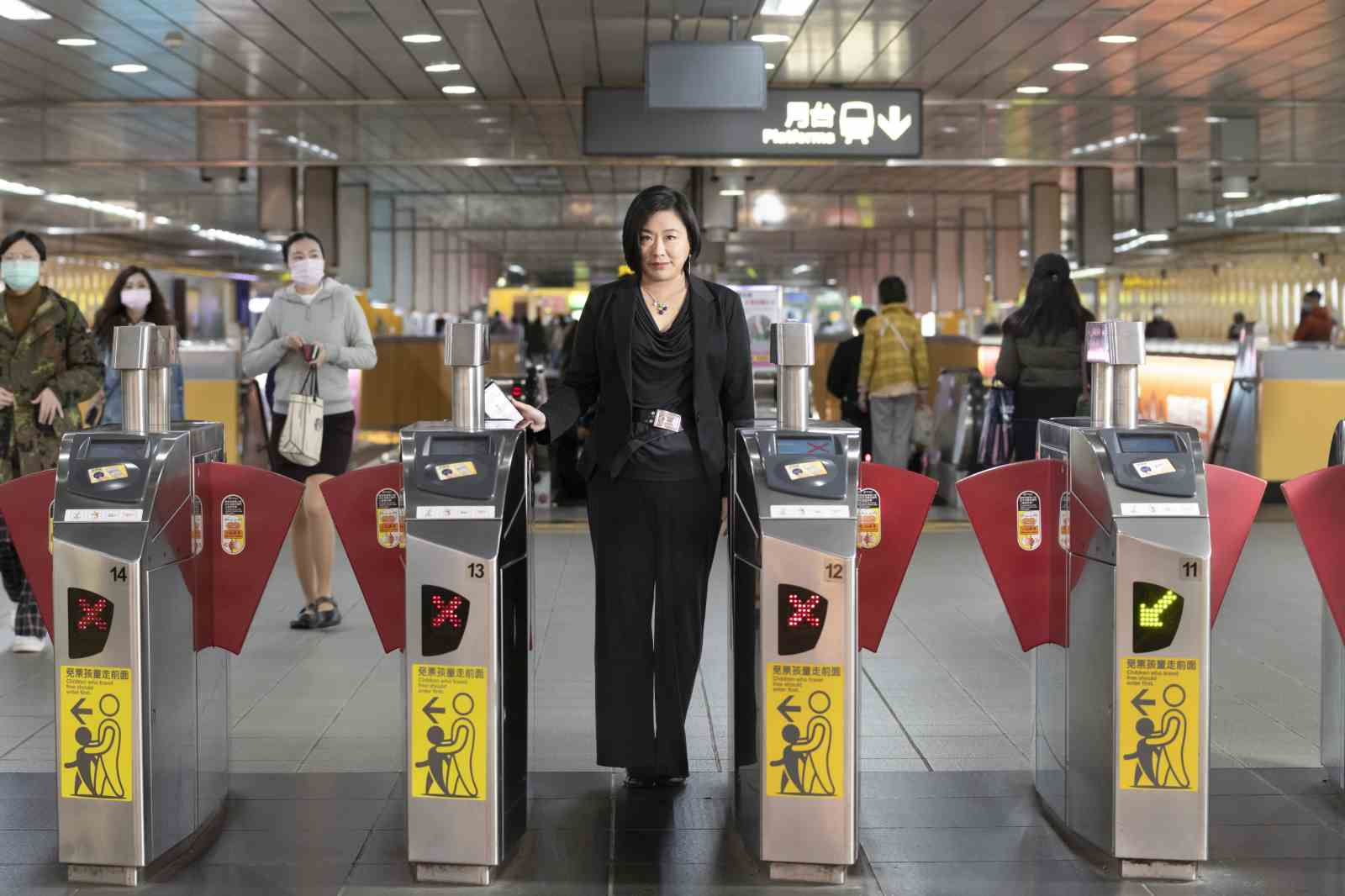Online Banking Takes Shape in Taiwan

Source:Pei-Yin Hsieh
Banking deregulation in 1992 paved the way for the establishment of new banks in Taiwan. Now, in 2021, 30 years down the road, we see the emergence of exclusively online banking amid the launch of a financial war worth trillions. With no brick and mortar branches or ATMs, all services are at one’s fingertips, heralding a new financial era. How could this change Taiwan?
Views
Online Banking Takes Shape in Taiwan
By Peihua Luweb only
Bank consumers have changed. And today, the financial industry is facing a generation of young people that are the most ambivalent yet towards banks, have access to the most information, and are the pickiest in history.
The consulting firm McKinsey & Company predicted in 2019 that the proportion of the Taiwanese population using digital channels as their main consumption channels will reach 70% by 2030. By then, today’s youths will likely have become the new wealthy class, as members of the middle-aged and older generations become increasingly familiar with digital experiences.
Over the past five years the number of digital savings accounts in Taiwan has exceeded five million.
Another force comes from the entry of new competitors. Lacking a physical presence, purely online banks must leverage customer experience to succeed.
John Reed Chuang, senior vice president of the Taiwan Insurance Institute, notes that in the future, the operation of exclusively online banks returns sovereignty to the customer, providing customized service.
Opponents on this battlefield also include crossover competitors from other fields, including e-commerce outfits with good insight into customer operations, with notable examples including Shopee with lending, and PChome selling insurance policies. Other formidable bricks-and-mortar channels, such as PX Mart’s expansion into electronic payments with PX Pay, signal operations moving beyond servicing the chain’s own customers. Meanwhile, EasyCard has also ventured into online payment, aiming to become the third-largest electronic wallet service in Taiwan.
Trend #1: faster, smarter, anticipates customer needs
Amid the shakeup, conventional banks have also made some sophisticated adjustments. Instead of passively waiting for customers to come into a branch office, they now actively utilize digital channels to satisfy customers’ financial needs.
E.SUN Commercial Bank’s e.Fingo series is its crown jewel. As of 2020, customers using E.SUN’s digital services to purchase funds, apply for credit cards, conduct foreign exchange transactions, and secure loans accounted for over 60 percent of the bank’s transactions.

E.SUN Bank is working to continuously optimize its workflow. For instance, consumers can now walk into a Carrefour outlet, open the app, get approved for a new credit card, and begin using it within minutes. This is a far cry from the minimum seven-day waiting period of the past.
However, E.SUN’s dilemma is that every digital service, from the e.Fingo series through the E.SUN Wallet, is that despite its popularity with the market, customers are making isolated interactions. As this is not the full scope of activities, E.SUN is unable to gain a full picture of the customer’s footprint in order to better anticipate customer needs.
Wen Hsue-hua, ESB’s deputy digital financial officer, relates that last year the bank launched the e.Fingo digital brand, which is more than a digital account but rather a member operations channel. For every interaction with E.SUN’s services, customers can accumulate points, which can be redeemed for discounts on further such interactions.
The secret to CTBC Bank’s digital transformation was hidden in the ATM.
At last year’s Financial Services Roundtable, Chinatrust Commercial Bank (CTBC Bank) brought in a big screen ATM machine with a 19-inch touch screen, allowing customers to swipe it like a smartphone. In the future, the bank’s ATMs will not only let you withdraw money, they will be bundled with CTBC Bank’s official Line account, collecting a complete picture of the customer’s offline footprint.
What led CTBC Bank to take this approach? With the most ATMs in Taiwan, numbering more than 6,000, the bank records 11 million users per year, or around 120 million transactions.
Chinatrust leverages the most advantageous offline touchpoints to guide customers online. The next step is using data to predict needs, and pushing financial products customers need at the right time.

More than gaining additional members, CTBC Bank is looking to deepen relationships with members. Accordingly, the bank is actively working to put diverse offline channels in place.
In addition to cultivating the Line ecosphere, late last year it became the first financial services provider in Taiwan to join Apple Business Chat. This way, iPhone users can access real-time CTBC Bank customer service with ease using iMessage.
Trend #2: greater cover and penetration
Pchome, Chailease Finance free from regulation, more competitive
Under the new financial war, those providing financial services are not necessarily strictly financial firms. PChome, Chailease Finance, and Shopee are prime examples.
Formerly an e-commerce vendor, PChome teamed up with E.SUN Bank to issue a joint credit card in 2018, running a major rebate campaign together, and winning recognition in the market by aligning with offline wallet vendor Pi. This also helped PChome rapidly accrue transaction numbers and total transaction value.
PChome’s first step was to target the 120,000 vendors on its own site. Most of them have offline shops, but would have difficulty applying to set up card processors due to their small size. This is where Pi stepped in as an alternative option, enabling shops to receive funds with just a QR code.

Not only did it seek to resolve vendors’ difficulties with receiving funds, but PChome also wanted to make it easier for them to borrow money. Previously, online vendors were often too small, or unregistered, so banks would not lend them money. However, PChome had full operational data for its retailers, making it even better equipped than banks to gauge vendors’ credit, relates PChome CEO and general manager, Kevin Tsai.
PChome is now collaborating with banks, yet Tsai does not shy away from saying that the company will not rule out providing loans itself in the future.
A potential threat to the financial industry would involve cooperative partners with access to data bypassing banks entirely to offer services on their own.
Chailease Consumer Finance, a Chailease Finance subsidiary, looks for business among the consumer segment that banks are afraid to issue credit cards.
Jerry Chang, consumer vice president for Chailease, relates that he worked with scooter repair shops 20 years ago on installment payment plans for scooter purchases, including those for students who had just gotten their license, recent college graduates, and couriers who needed motorcycles to make their living. All of these people had a need for motorcycle loans, but were unable to borrow money from the bank or apply for a credit card due to unstable incomes. This is what led them to Chailease.

Three years ago, Chailease took the package deal concept online, helping e-commerce merchants sell high-displacement motorcycles, laptops, and boutique goods, scoring an unexpected hit. From major e-commerce merchants to furniture chains and surrogate shopping sites, each sought out Chailease to work together.
According to Chailease estimates, there are between five and eight million people in Taiwan who either do not have a credit card or have an insufficient line of credit.
The key to why Chailease boldly does business that banks will not do is its risk control experience over the course of 20 years of offline installment payments.
Chang gives the example of a member, a dance teacher, whose business was unregistered and who taught from a home studio. So she was neither an independent business nor employee, and was therefore unable to apply for a credit card. However, Chailease was willing to lend her NT$50,000 first, to let her gradually establish a credit record. As long as she maintained a good payment record, they raised her borrowing quota.
Trend #3: cooler and funner
With more users than Line, EasyCard sprints to catch up
“It’s tough to communicate with young people. Banks have never been interesting,” remarks Alice Chen, CEO of the EasyCard Corporation
Taiwan’s largest transportation card, with 80 million cards in circulation and 20 million in frequent use, EasyCard can claim more users than the Line app. However, some believe EasyCard has come to the electronic payments game late, missing the ideal opportunity.
EasyWallet got up and running less than a year ago. With around 800,000 members at present, it aims to surpass E.SUN by mid-year before taking aim at JKOPAY and Line Pay. But what Alice Chen is especially thrilled about is that EasyWallet’s cost of acquisition is only NT$50 per customer, or only about one quarter that of its rivals. The secret is taking an earlier, more thoughtful look at customers.

One of EasyCard’s major advantages is that Taipei City’s child-rearing stipends can be credited directly to one’s EasyWallet account, making new mothers “sticky” users. And this is just the first step, as EasyCard’s next steps involve making alliances with diaper companies, pharmacies, and childcare product shops, making money on the retail side.
With greater convenience comes greater debt?
Last year, Shopee introduced a delayed payment option, enabling a shopping experience with immediate consumption and deferred payment. It was not Taiwan’s first e-commerce firm to offer delayed payments. However, Shopee did this on its own, unlike others who partnered with banks. The risk in going around banks is that it goes outside the purview of the Financial Supervisory Commission.
Normally, there is an upper limit on unsecured loans by financial firms, whereby an individual’s debt among the entire financial institution’s unsecured debts must not exceed 22 times their monthly income. However, outside the regulation of the Financial Supervisory Commission there is no upper limit.
The financial reorganization of China’s Ant Group (owner of Alipay) is like a tocsin, reminding financial service providers not only to offer convenience, but to be accountable to consumers.
Taiwan has always been a highly regulated financial environment. Today, as exclusively online banking gets rolling, Taiwan’s top 10 financial groups are proceeding with caution, while other industries gird themselves for battle. And the stage is set for the financial services show to get started.
Have you read?
♦ Taiwan Digital Minister Audrey Tang: Citizen Hackers Save the World
♦ The Pulse of Multinationals
Translated by David Toman
Edited by TC Lin
Uploaded by Penny Chiang






